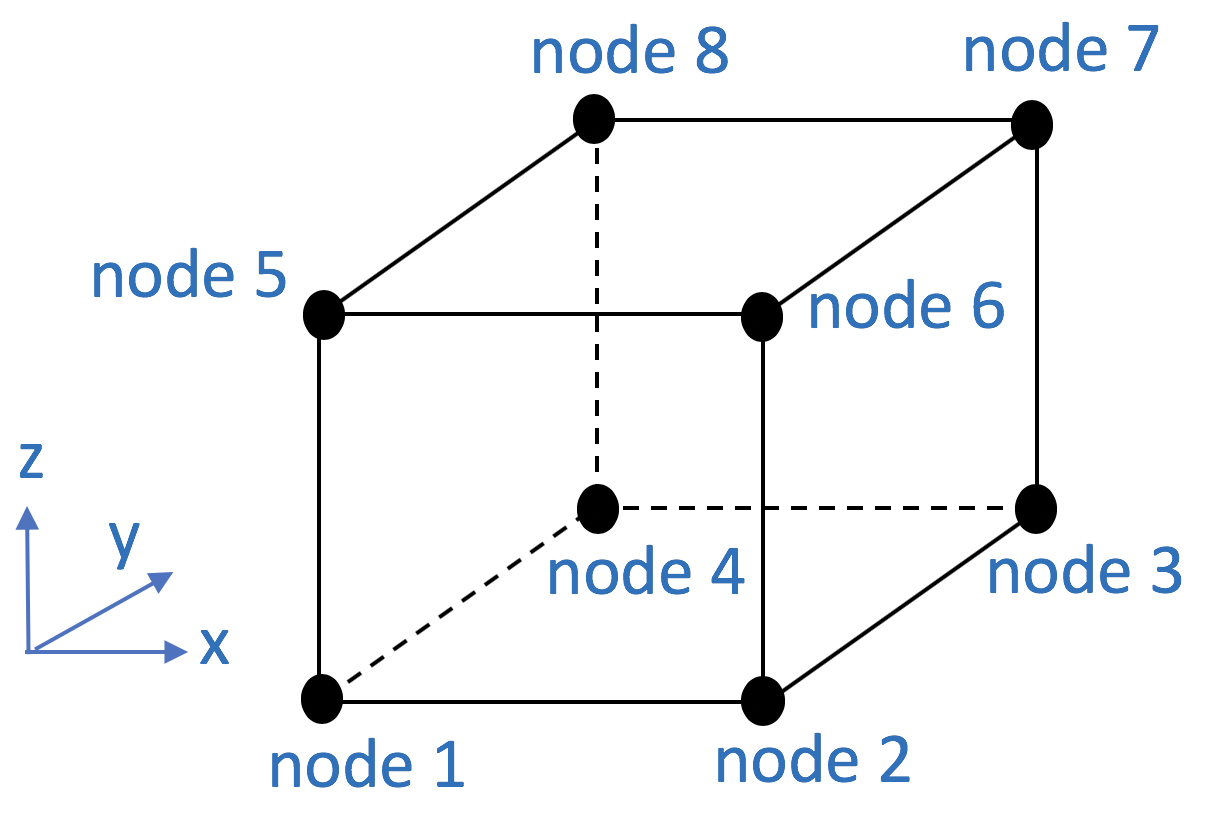3.1.10.22. bbarBrick Element
This command is used to construct an eight-node mixed volume/pressure brick element object, which uses a trilinear isoparametric formulation.
Command
element bbarBrick $eleTag $node1 $node2 $node3 $node4 $node5 $node6 $node7 $node8 $matTag <$b1 $b2 $b3>
Argument |
Type |
Description |
|---|---|---|
$eleTag |
integer |
unique element object tag |
$node1 .. $node8 |
8 integer |
nodes of brick (ordered as shown in fig below) |
$matTag |
integer |
tag of nDMaterial |
$b1 $b2 $b3 |
list float |
optional: body forces in global x y z directions |

Fig. 3.1.10.21 bbarBrick Element Node Numbering
Note
The valid queries to a Brick element when creating an ElementRecorder object are ‘forces’, ‘stresses,’ (‘strains’ version > 2.2.0) and ‘material $matNum matArg1 matArg2 …’ Where $matNum refers to the material object at the integration point corresponding to the node numbers in the isoparametric domain.
This element can only be defined after a Section 3.1.1 with -ndm 3 -ndf 3
Example
The following example constructs a bbar brick element with tag 1 between nodes 1, 2, 3, 4, 5, 6, 7, 8 with an nDMaterial of tag 1 and body forces given by varaiables b1, b2, b3.
Tcl Code
element bbarBrick 1 1 2 3 4 5 6 7 8 1 $b1 $b2 $b3
Python Code
element('bbarBrick',1,1,2,3,4,5,6,7,8,1, b1, b2, b3)
Code Developed by: Edward Love, Sandia National Laboratories